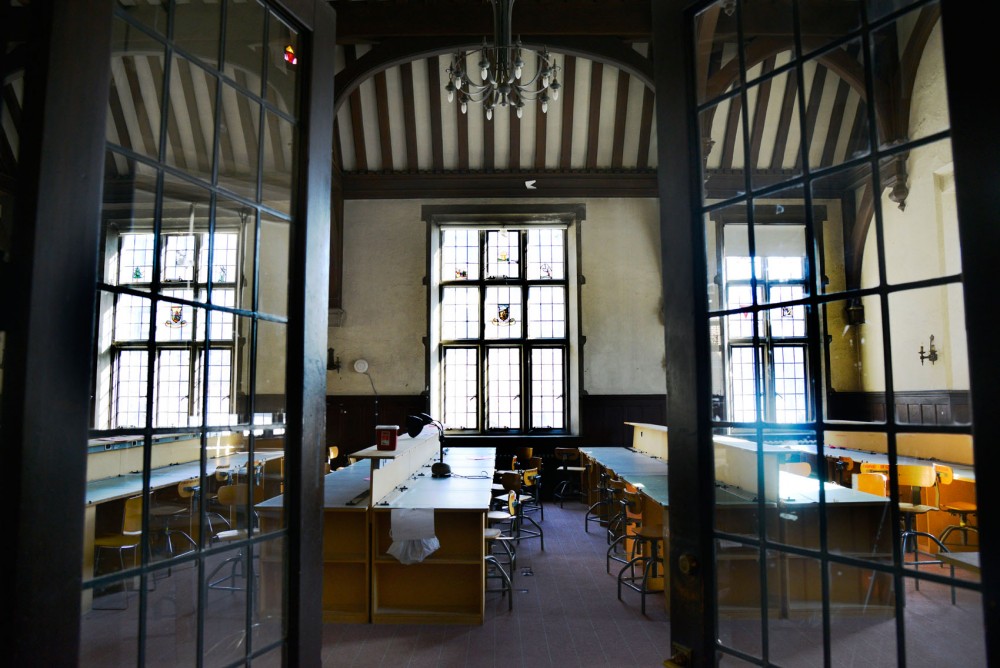On the edge of Dinkytown at 15th and University avenues southeast, a nearly century-old building contrasts with the newer Sydney Hall apartment complex across the street.
But inside those limestone walls, University of Minnesota researchers are doing cutting-edge design work in the Center for Sustainable Building Research.
Billy Weber, the center’s interim director, said the center is a helpful resource for developers and other builders who don’t always understand the science behind sustainable building design.
Center for Sustainable Building Research staff members aim to explain research information so it’s easier to understand, he said.
Weber said the center’s researchers are passionate about their work and want to spread sustainable building practices.
“Sustainability for all, versus sustainability for those who can afford it,” he said.
The center developed Minnesota’s sustainability goals, called the B3 guidelines, and the SB 2030 Energy Standards.
The B3 guidelines are the state’s general sustainability recommendations, and the SB 2030 guidelines, which are based on a national program, focus on energy efficiency.
The state of Minnesota put the center in charge of making sure building projects funded with state money meet these sustainability standards, said Patrick Smith, a Center for Sustainable Building Research fellow.
Before construction gets under way, Smith said, center researchers review design plans to ensure a plan’s sustainability goals are feasible.
After the building is complete, the researchers track energy use over time to see if the buildings are up to code.
The center also works with nonprofits to provide advice on how to make sustainable design more affordable.
Though the center’s research is sustainable, the center’s building, ironically, isn’t energy efficient.
The facility, which also houses the Center for Changing Landscapes and student studios, has single-pane windows and a cold steam radiator.
Smith said these outdated features make the building inefficient with energy use. That’s unlikely to change, he said, because the University may relocate the Center for Sustainable Building Research.
Former director John Carmody created the center in 1997 when several building researchers were set to retire.
Virajita Singh, a senior research fellow at the center, said there were many concerns with a lack of sustainability in building design when the center started.
Smith said many center employees are former architecture students or teaching assistants.
Now, each researcher the center employs has their own specialty in the field of sustainable building design, with focuses ranging from affordability to teaching sustainable design.
Carmody stepped down in December, so the University is searching for a permanent director to lead the center.


